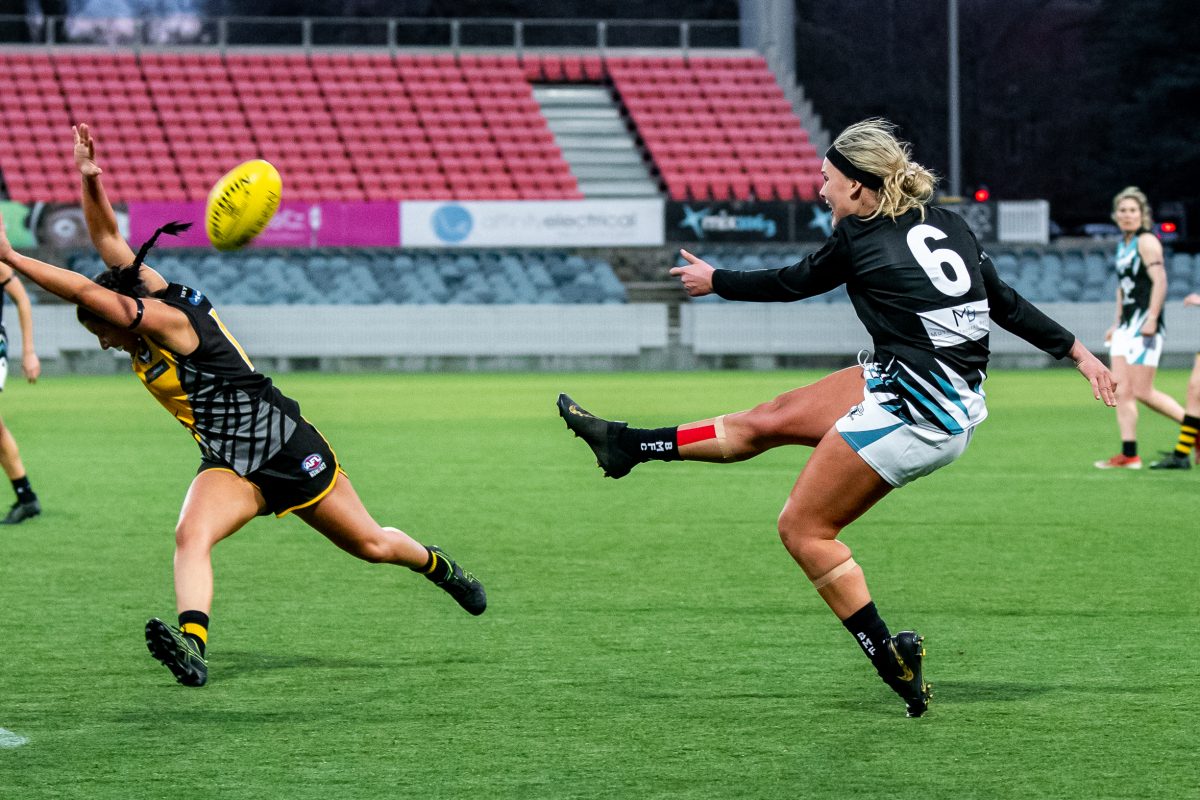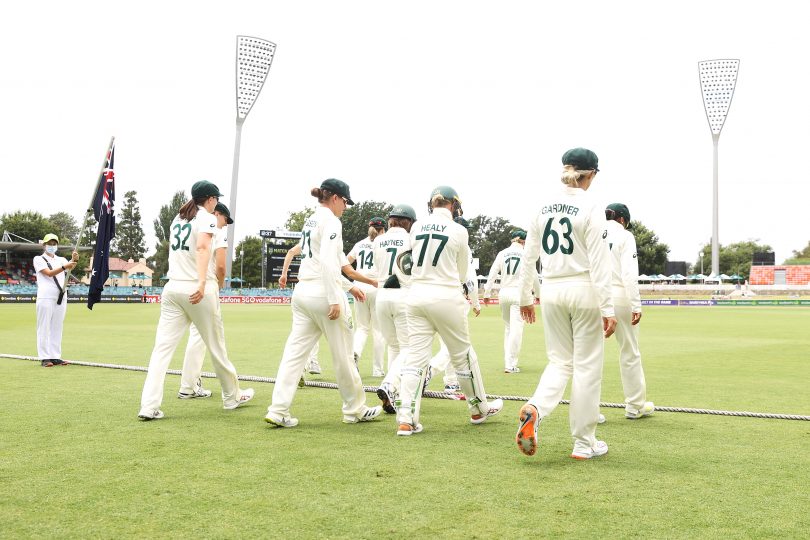
Maggie Gorham in action for the Belconnen Magpies during the Canberra women’s first grade grand final in 2019. Photo: Wodshots Photography.
With the growing profile of women’s sport in Australia, it has become an easy target for those uncomfortable with its growth.
The most strident criticism, most recently, has been directed at the AFLW where comparisons have been with the male equivalent, the AFL.
A Melbourne commentator writing in the Herald Sun claimed: “Senior high school boys’ football is better to watch”. The same commentator questioned the government funding provided to the women’s game.
The comments followed the score line in the AFLW game between GWS and Adelaide. Adelaide kicked 15 goals to the Giants’ one behind.
The writer also referenced the game between Richmond and Brisbane, with a combined three goals between them.
He also went on to say there would be a Royal Commission if a similar situation happened in the senior men’s AFL. The commentator failed to point out some of the clear inequities between the AFLW and the AFL.
Despite this, there is a constant comparison with the men’s competitions among some commentators of the sport.

Georgia Clayden, like many AFLW players, has transitioned from another sport to join the AFLW. Photo: Supplied.
Missed by critics of the AFLW is the fact that many women’s sporting competitions are fledgling in terms of full-time, paid team members and staff. This is despite women’s Australian Rules Football having a strong history dating back to 1915.
Yet women’s football does not share a history of access to community-based, weekend competitions for kids and adults like the men’s game. We see it now, but it is a recent phenomenon.
Critics also fail to compare the pay packets. Almost all women playing in the AFLW are earning their living elsewhere. Even with the recent increase in salary for AFLW players, the pay packet is considerably less than their male counterparts.
Surely encouragement would be more productive than the onslaught of criticism. The game needs to grow so that more young women have the opportunity to play.
We had similar criticism when other women’s sports were beginning to gain a profile.

The Australian team take the field during day two of the Women’s Test match in the Ashes series between Australia and England at Manuka Oval on January 28, 2022. Photo: Mark Kolbe/Getty Images with permission from Cricket ACT.
Questions were raised about the shortening of the boundaries in women’s cricket.
There has been debate about women receiving equal prize money to men when they only play the best of three sets in Grand Slam tennis.
There will be differences between some women’s and men’s sports because of physiological differences, but this doesn’t impact in any way on the spectacle of the sport nor the effort, talent or challenges faced by the competitors.
Surely you would not turn away from watching the world’s best in a women’s 100-metre track race simply because the 100 metres world record for women is 10.49 seconds, while the men’s is 9.58 seconds?
A comparison of world records historically for men and women in both the 100 metres track and 100 metres swim show that women’s times have improved more rapidly when compared with men’s times. Could this be because these sports are becoming more egalitarian over time?
Yet despite this, the comparison between male and female sport is reasonably meaningless. What is important is the competition itself and the performance that athletes bring to the competition – the effort, the talent on show, and the emotion and anticipation surrounding the event.
Even the language of women’s sport is often viewed in relation to men. This is seen in the term ‘NRLW’ which has an equivalent with ‘NRLM’, with ‘M’ representing ‘men’. The use of NRLW assumes that the game is secondary to the NRL, which it isn’t. It is a competition in its own right and is not secondary to the NRL.
Another example comes from the NRL grand finals on the weekend, where some commentators treated the NRLW grand final as a curtain-raiser to the men’s grand final. Instead, each game should be considered in terms of the merits of the game itself.
As it turned out, the NRLW grand final between Newcastle and Parramatta was a great spectacle and the Eels-Panthers grand final was a one-sided affair. And that’s sport. Sometimes games are great cliff-hangers and other times the games are one-sided. That’s why the comparison between men’s games and women’s games is meaningless.
The point remains, whatever the circumstances and whatever the score line, women’s sport deserves greater respect.
Original Article published by Tim Gavel on Riotact.






